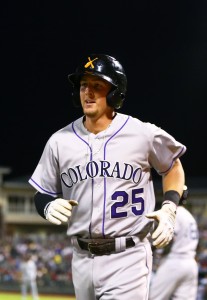The Athletics have acquired lefty Sam Moll from the Rockies, per an announcement from the Colorado organization. Cash considerations or a player to be named later will make up the return for Moll, who had been designated for assignment recently.
Moll, a 2013 third-rounder, showed enough to earn a 40-man spot but had yet to receive a major league promotion. He carries a 4.18 ERA over 47 1/3 innings on the year at Triple-A, with 7.4 K/9 against 3.4 BB/9 along with a healthy 50.3% groundball rate.
Those numbers don’t tell the full story on Moll, who was generally regarded as one of the organization’s top thirty or better prospects entering the season. He brings mid-nineties heat from the left side with a slider and even a change that can be effective at times.

